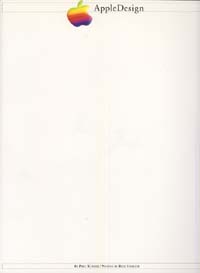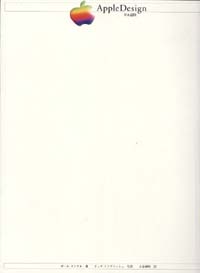
APPLE DESIGN
This book explains the history of industrial design of Apple 20 years together with abundant mockup photograph which makes me think that it is possible to publish so far. Along with the history of Apple, it has clarified the code name of the product, the course of the design, the composition of the design team such as internal designer or outsider, etc. In addition to simply honoring the achievement of industrial design, it is constructed so that the process of growth and transformation of Apple Inc. can be seen through design history. Regarding Original Apple II, Jerry Manock's design concept, the background of plastic case manufacturing, the episode related to the logo concept, the relationship with frog design on Apple IIc's design etc. are carefully described. Author’s PAUL KUNNEL is a free writer living in New York and seems to be doing a lot of writing to industrial design magazines. At the end of the book, CEO's Amelio at that time, "Final Word" showing Apple’s vision was posted on 3 pages, and the full backup and enthusiasm for Apple’s book is conveyed. The last word is closed to "It’s time to forward. The Journey is reward" is implicit if it overlaps with the subsequent flow of resignation of Amelio and return of Jobs.




